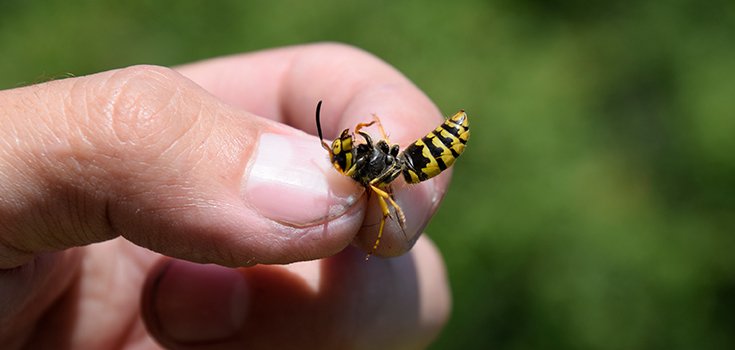Neonics Pesticide Replacement Found to be Equally Dangerous to Bees

A chemical touted as a safer replacement for bee-killing neonicotinoid pesticides (neonics) has similar harmful effects, researchers in the U.K. have discovered.
Neonicotinoids are a class of insecticides intended to protect crops from pests by blocking receptors in the insects’ brains, paralyzing and killing them. Even small doses of neonics can cause bees to struggle with navigation, hunting for food, reproduction, and their ability to form new colonies.
As a result of neonics’ effects on pollinators, the European Union (EU) banned the outdoor use of 5 neonicotinoid products in April 2018. Canada began phasing them out on August 15, 2018. However, in the United States, neonics are still widely used.
Due to the development of neonicotinoid resistance among some insects, scientists in recent years have turned to sulfoximine as a replacement. This group of insecticides act on the same class receptors in the insect brain but can safely avoid the enzymes that make some insects resistant to neonics.
Sulfoximine has been approved by regulatory bodies in China, Canada, Australia, and the U.K. [2]
Recently, scientists studied the effects of sulfoxaflor – a member of the sulfoximine class of chemicals – on bumblebee colonies and found that it reduced the number of worker bees in the colony and, eventually, the number of offspring the colony produced.
Study author Harry Siviter, from Royal Holloway, University of London, said:
“Our results show that sulfoxaflor can have a negative impact on the reproductive output of bumblebee colonies under certain conditions.”
Sulfoximine was approved by the U.S. Environmental Protection Agency (EPA) under the Obama Administration. Initially, the rules governing the pesticide’s use were fairly loose, but a court decision vacated the initial approval in favor of more stringent restrictions to protect bees.
It cannot be sprayed on plants that attract bees until they have finished blooming, it is illegal to spray the insecticide on a select number of blooming plants, and it can’t be sprayed on any plants grown for seed.
For the study, researchers exposed bumblebee colonies to doses of sulfoximine similar to those they would be exposed to after the insecticide is applied to crops, and compared their health to those of colonies that were not exposed.
It was clear that the bees had suffered as a result of sulfoximine exposure when individuals from colonies exposed as larvae started to emerge as adults, but fewer worker bees emerged.
Furthermore, 9 weeks after the bumblebees were exposed, exposed colonies produced 54% fewer new queens and males – the only bees that reproduce. The authors wrote in the report that this suggests sulfoximine could significantly impact successful reproduction among bumblebee colonies. [1]
Study author Dr. Ellouise Leadbeater of Royal Holloway, University of London, said:
“Our study highlights that stressors that do not directly kill bees can still have damaging effects further down the line, because the health of the colony depends on the health of its workforce.” [2]
More importantly, the study shows that replacing one toxic insecticide with another is not the answer to protecting crops from pests.
The study is published in the journal Nature.
Sources:
[1] Science Magazine
[2] EcoWatch

I see that Jules didnt do much research with her time off. With the EU restricting the use of neonicotinoids since 2013 the EU’s bee population has still declined, while populations in the US with no restrictions have been going up. Obviously to any intelligent person, that would signal us looking at other causes instead of boring people with the same old crap that isnt true.
Thats not a bee